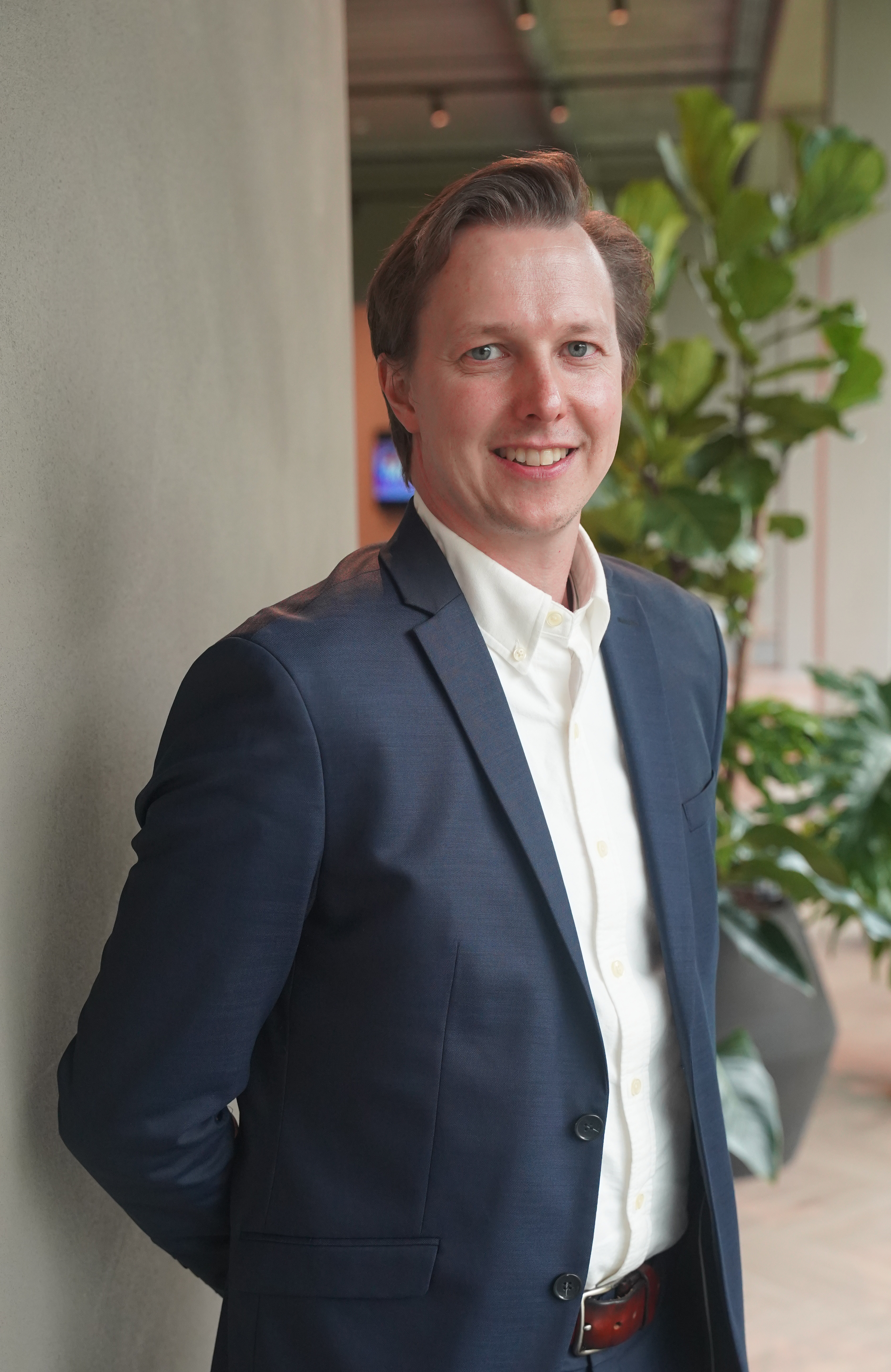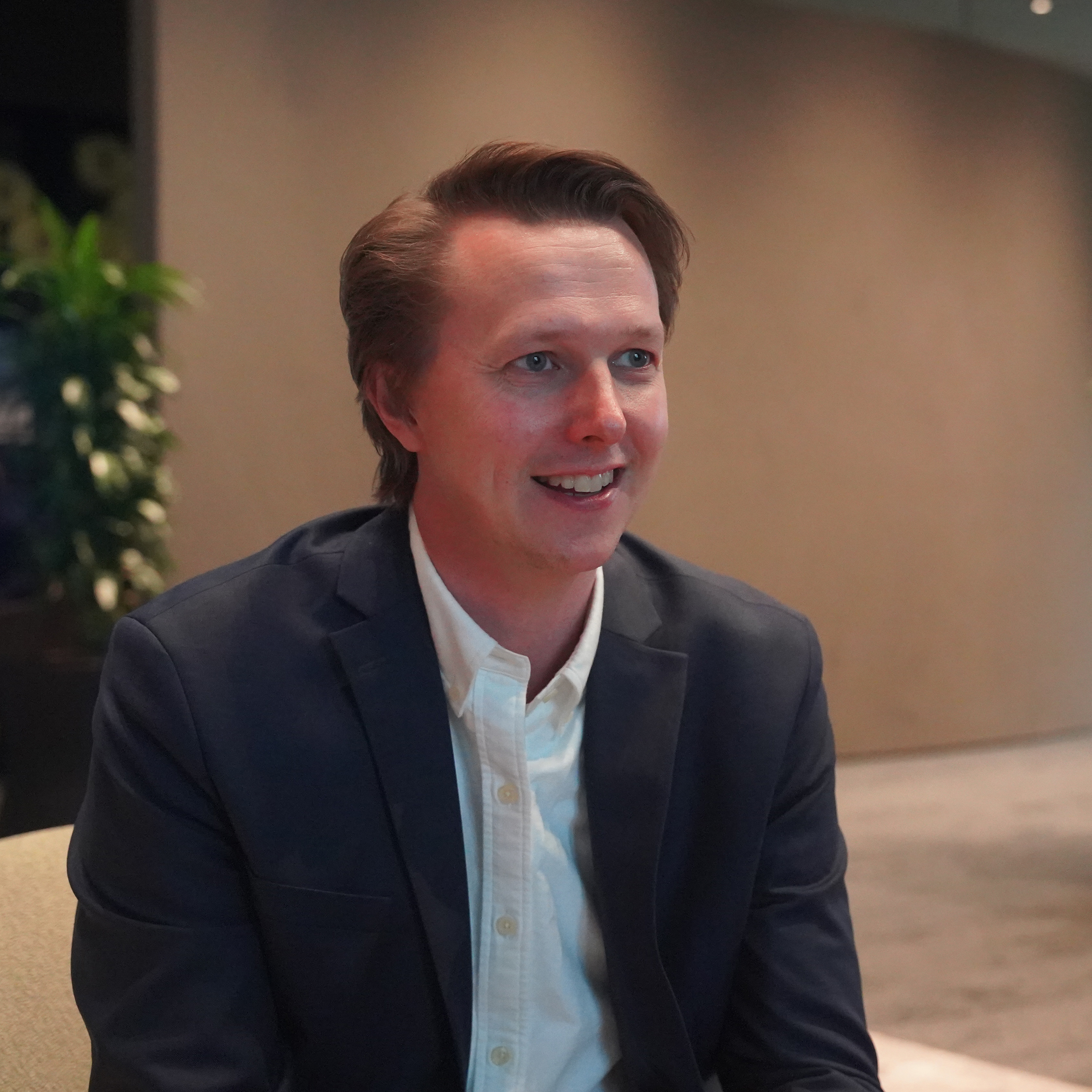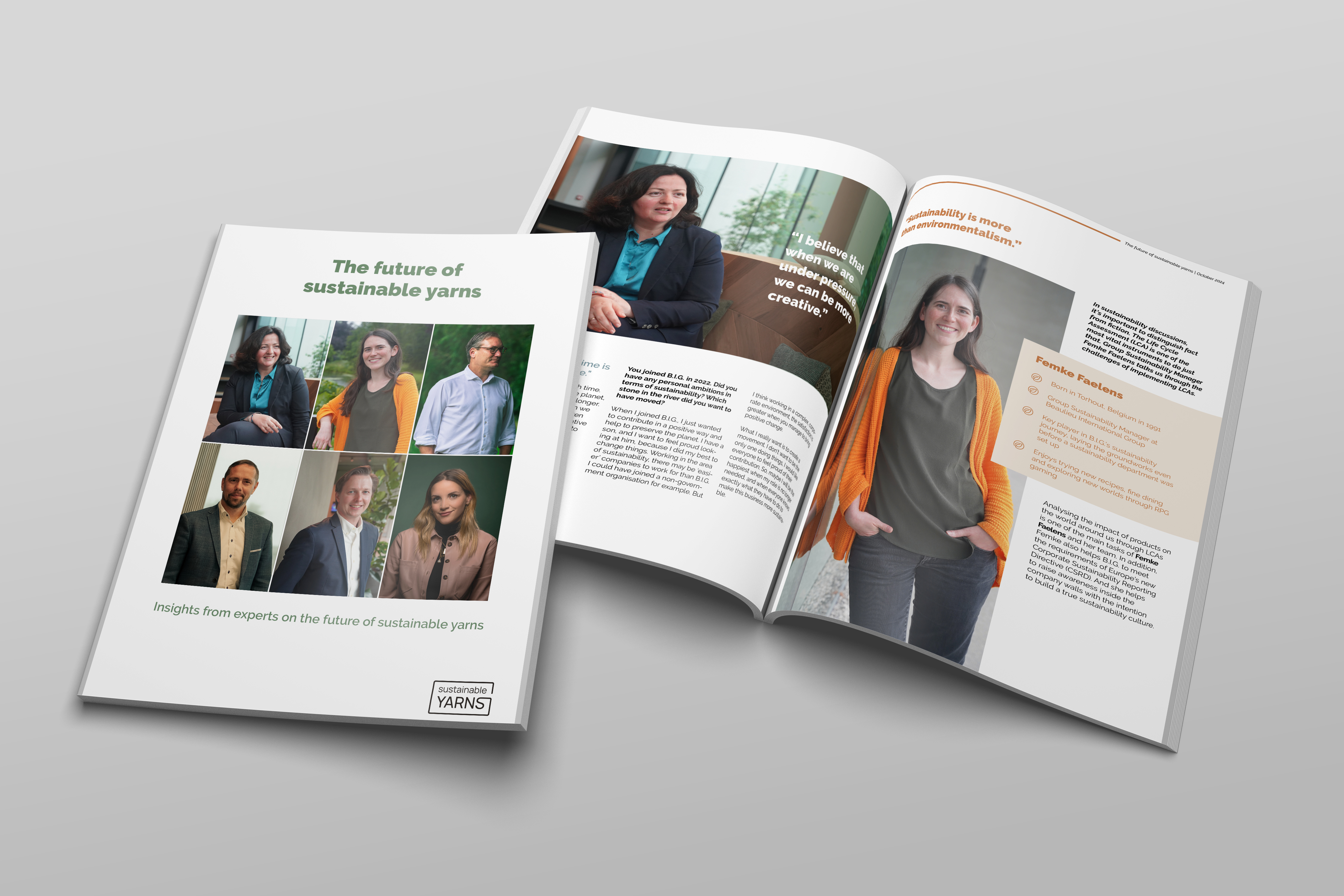Circular economy: building a resilient tomorrow

The circular economy is gaining prominence as industries strive for more embedded sustainability. According to Pieter Vanoosthuyse, B.I.G.’s Group Circular Economy Manager, achieving a circular economy hinges on dialogue
amongst all stakeholders, throughout the circular value chain.
Pieter Vanoosthuyse
- Born in Belgium in 1989
- Group Circular Economy Manager at Beaulieu International Group
- Loves to explore the world & connect
- Creating positive impact
As Group Circular Economy Manager at Beaulieu International Group, Pieter Vanoosthuyse has the corporate responsibility for the upstream and downstream circularity strategy and implementation. In his career up to now, Pieter has often combined business development with sustainability strategies. This makes him the ideal person to talk to when discussing ecology and economics.
Pieter, how do you explain the concept of a circular economy to people who have never heard of this?
In a linear economy, which we largely have today, depletable materials are extracted from the earth to create products that eventually end up in landfills or incinerators. This results in a significant value loss as we basically take-make-waste. In contrast, a circular economy aims to maintain the highest possible value through the several stages of the value chain – from raw material to component manufacturing, to product assembly, distribution, product use, collection, pre-treatment and recycling.
At their end of life they become valuable secondary raw materials, and are kept inside continuous loops, for example through re-use or recycling.
“Dialogue between all stakeholders throughout the circular value chain is crucial to enable circularity.”
How is B.I.G. Yarns contributing to the circular economy today?
As Group, we are taking this into two directions. First, we want to shift the origins of our raw materials away from fossil-based materials to recycled streams and bio-attributed streams, or take in raw materials with a lower carbon footprint. Secondly, we focus on the product’s end of life. For example, our yarns are designed to be 100% recyclable, so that they don’t need to end up in landfills or incineration facilities. We operate on two fronts in the value chain, both upstream and downstream.
So, collaboration with the value chain will be crucial?
Stepping into the circular economy means that you need to consider an entire ecosystem from the start, and understand how to optimally design the solution for each of the stakeholders and step in the full life cycle value chain.
At the end of life, collection is crucial, so mechanisms need to be set up properly. Sortability and recyclability have to be built into our products from the beginning. For example, looking at the carpet market today, there’s a growing trend towards monomaterial products, because recycling monomaterials is way more efficient.
Another point of focus is to design products for longevity, so they are kept in the loop much longer, and don’t need to end up as waste. But to keep that circular economy running, dialogue between all stakeholders throughout the circular value chain is crucial.
What are the biggest challenges on our way to a circular economy?
I think there are four key drivers we need to focus on. Innovation and technology are the first one. Looking at our own solutions: how can we design out waste from the start, and how can we make sure our products are kept at their highest values, inside the loop as long as possible?
Secondly, we need to have a transparent view on which materials are used where and how. Here, digitisation can help us to collect, store, and track data throughout lifecycles.
Third, we need to mobilise all players in the value chain to collaborate, because the circular economy is a concerted effort.
And last but not least, we need ambitious public policies and incentives that help boost the circular economy to new levels.
"By focusing on our circular economy strategy, we will build a resilient tomorrow, today!"
At this moment, we’re not close to a circular economy at scale. How can we get there?
Yes, the circular economy requires significant investments, and at the moment, it’s hard to strike a good balance between climate and economics, especially because we are currently facing a high market demand and supply shortage for certain circular materials. But eventually, as scales of economy increase together with public policies, this will leverage profitability. Then again, being an early adopter has competitive benefits too, because it gives us early access to circular value chains, which leads to new market opportunities.
B.I.G. is on its way to achieve a zero environmental footprint by 2030. How do you look upon the road taken so far?
When we look at the Route 3 part of our Route 2030 strategy – working towards a circular economy with the whole value chain in mind – we have already achieved a lot. Four years ago, we launched our Rewind sustainable event carpet, as one of the first circular economy projects. Today, we have several ongoing circular initiatives in each division, both focusing on downstream and upstream. Also our yarn customers have different sustainable options. Now the challenge is to educate our market and create a multiplier effect. The great thing about B.I.G. is that there’s a cross-fertilisation of ideas. What we have learned from Rewind in terms of take-back schemes for example, may be useful for other product portfolios as well.

The role of Group Circular Economy Manager seems challenging and rewarding at the same time. Do you have any personal ambitions when it comes to promoting circularity?
First and foremost, I want to make a positive impact in everything I do, both professionally and personally. As a father to a young daughter with a bright future ahead, I’m convinced it is our responsibility to ensure a sustainable future for the next generations. If I look at how technology has evolved, I’m convinced that we can enable the circular economy, provided that we implement the right strategies now.
Get the free Publication
Download: Insights from 6 experts on "The future of sustainable yarns"
